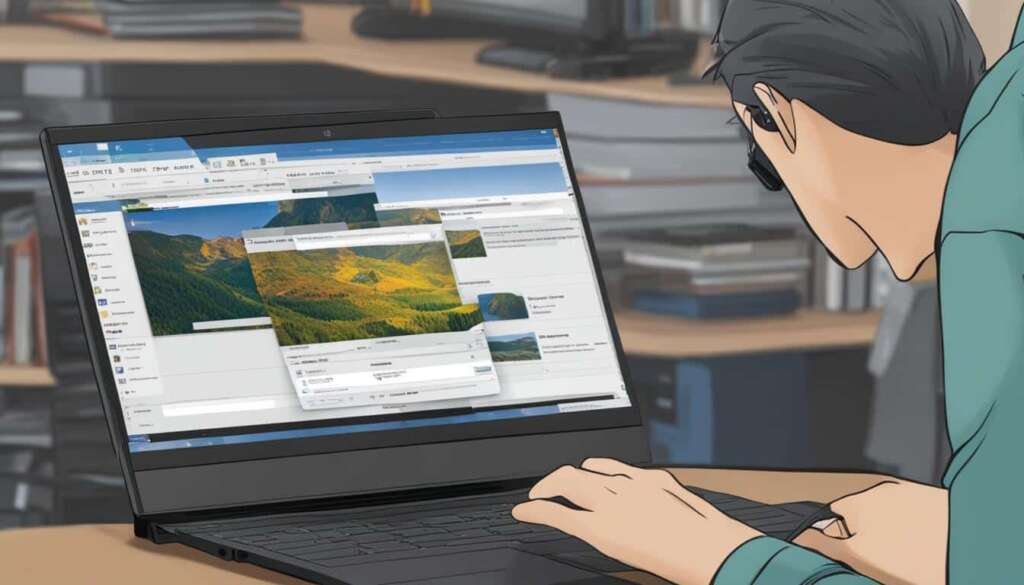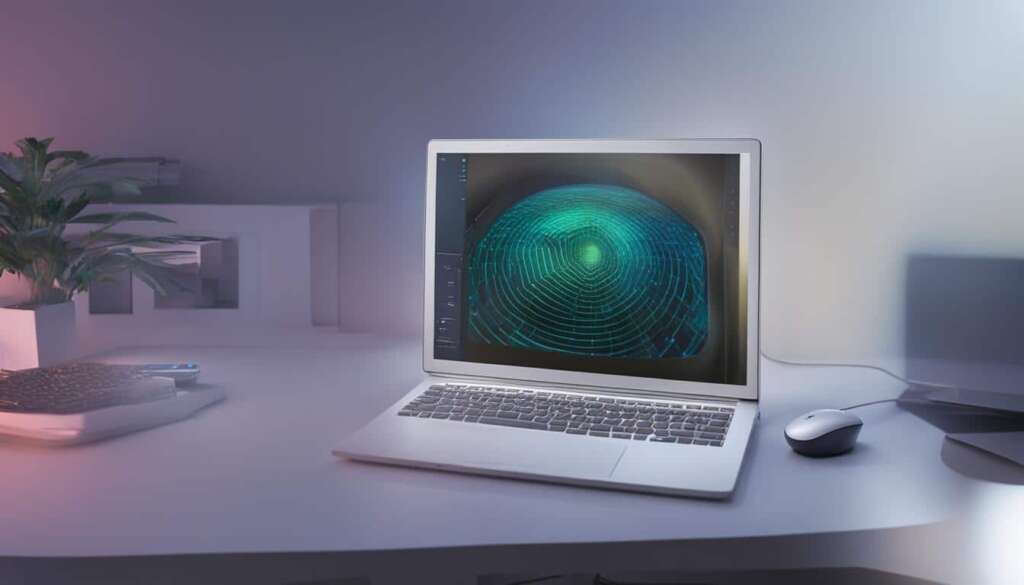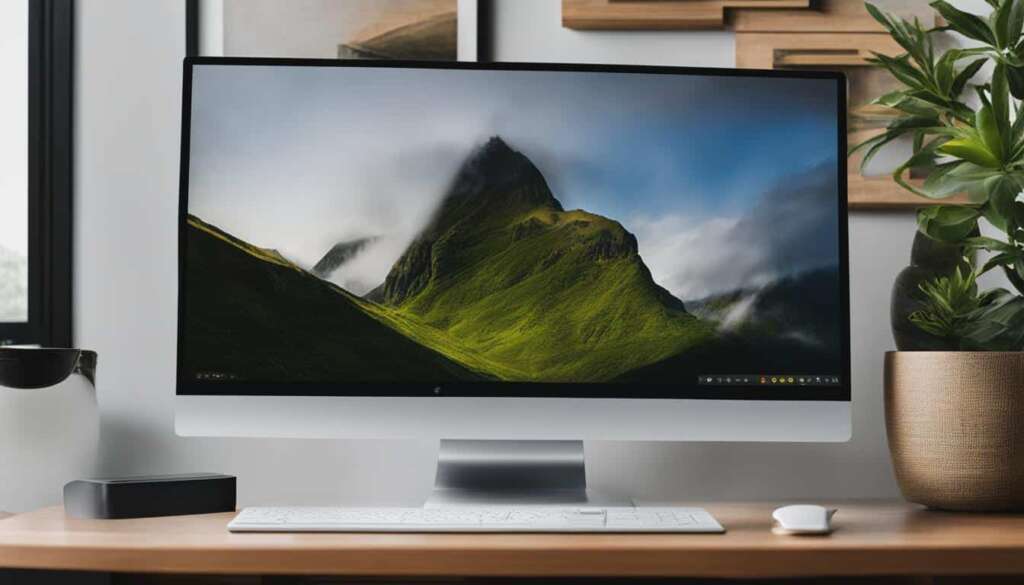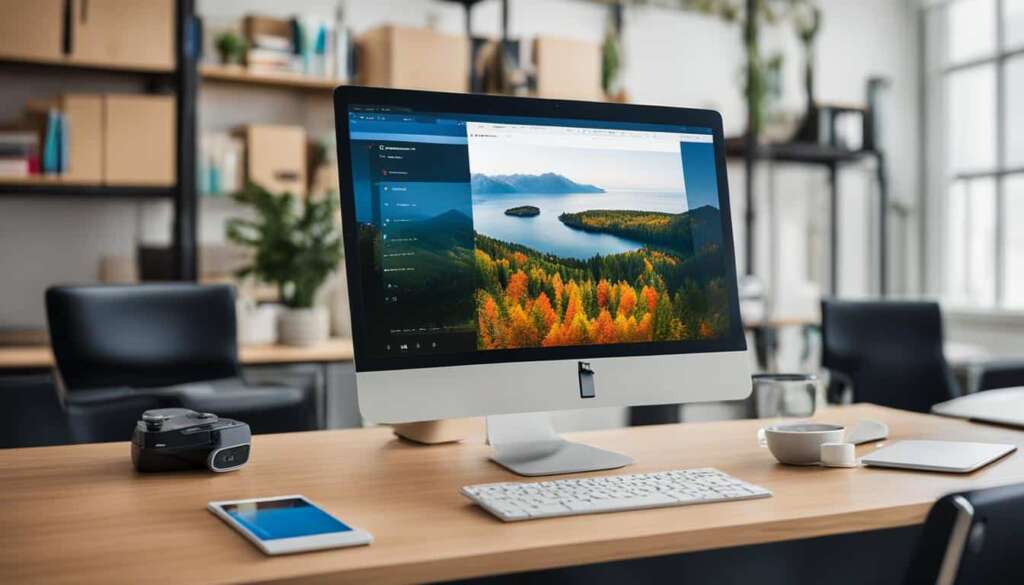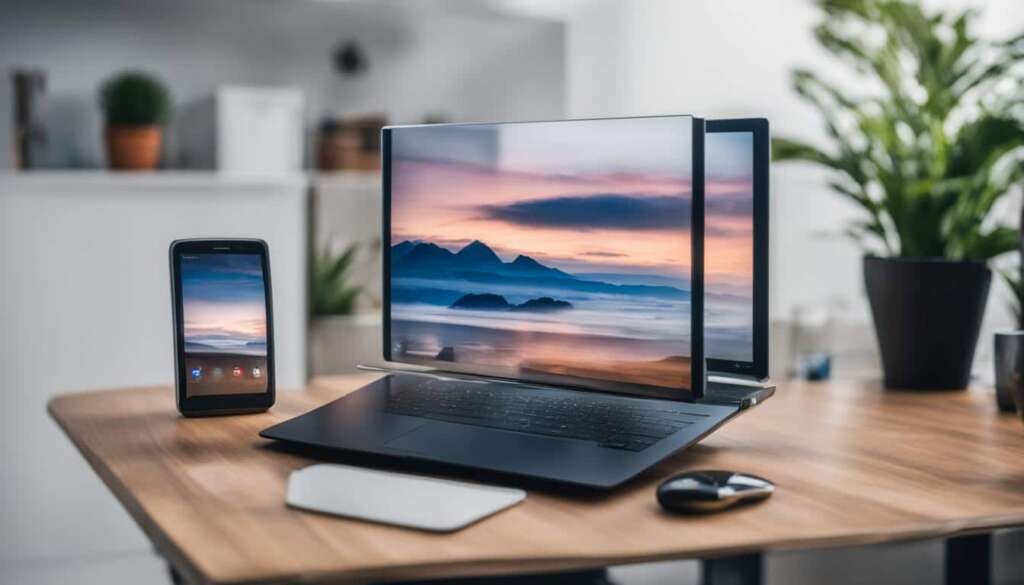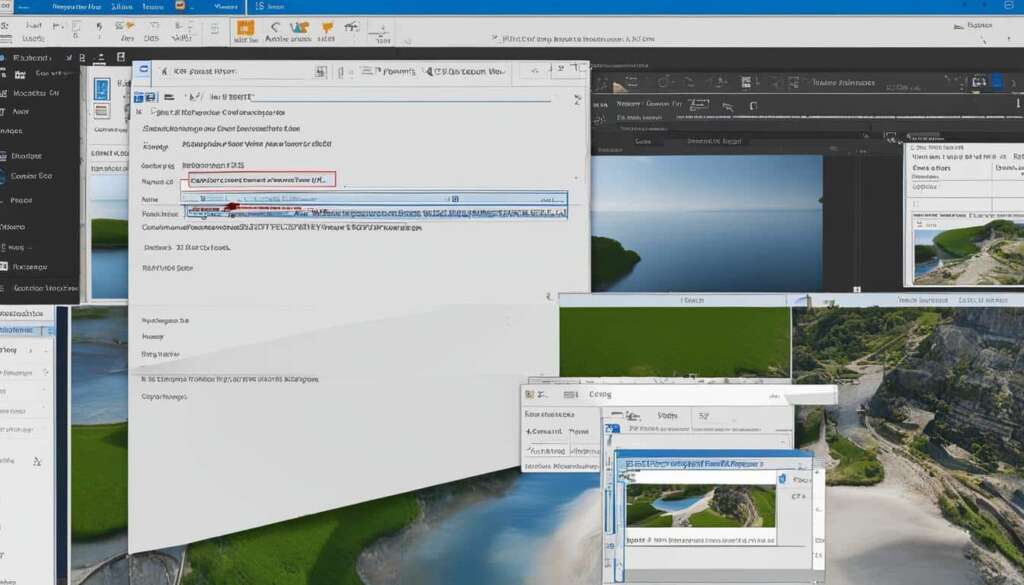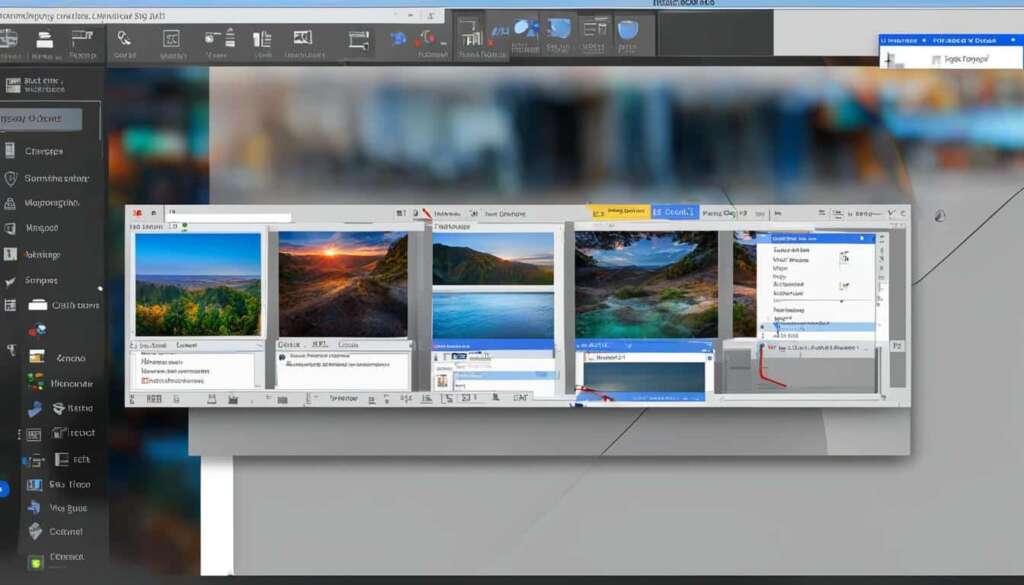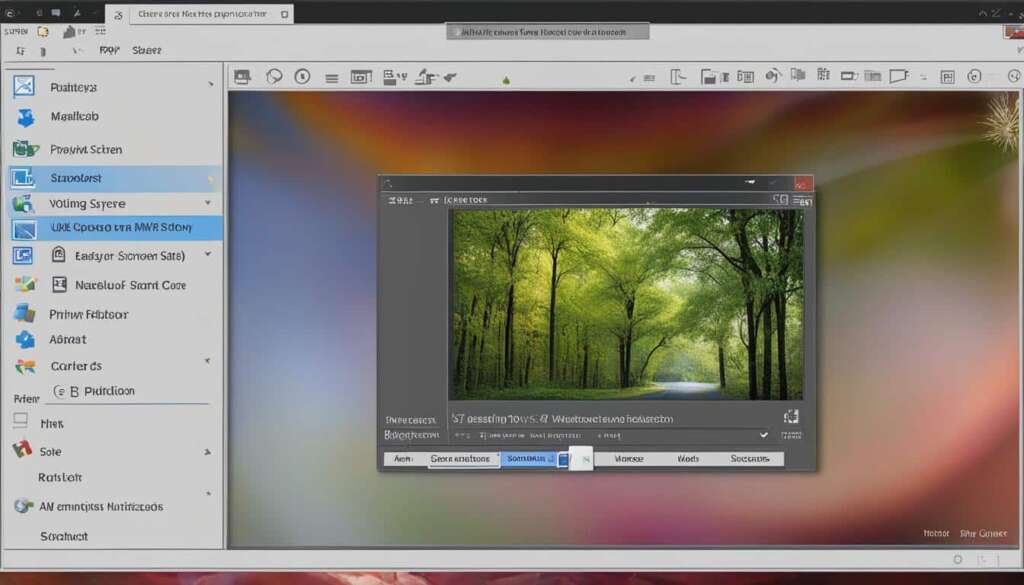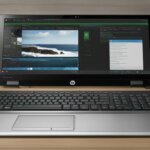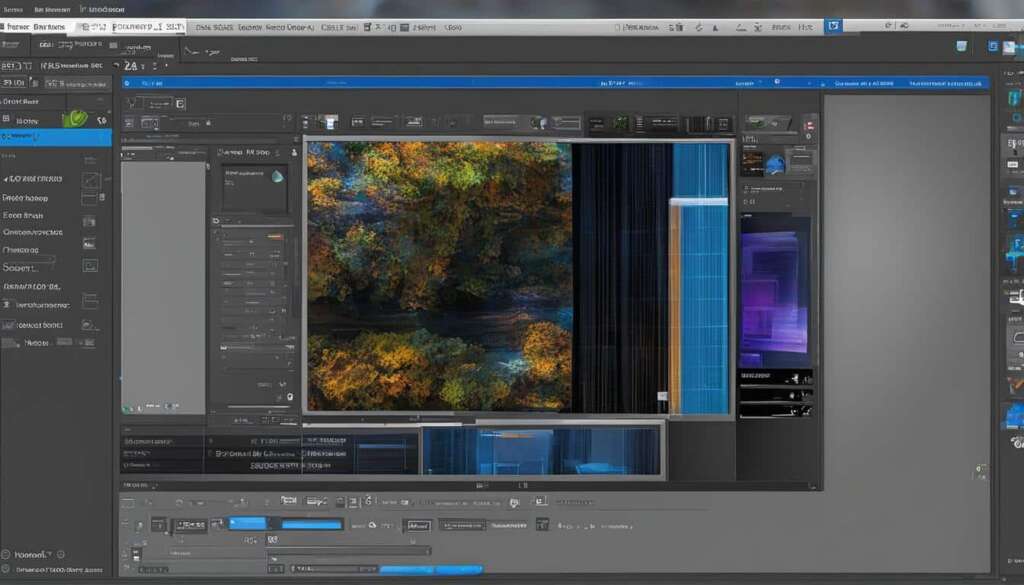Table of Contents
Do you need to capture your desktop screen for work or personal use? Taking screenshots is a quick and easy way to save and share information. Whether you’re using Windows 10 or Windows 11, there are several built-in methods for capturing screenshots on your desktop. In this tutorial, we’ll show you how to screenshot on desktop using various tools and shortcuts.
Are you ready to become a master of screenshotting on your desktop? Let’s dive in and explore the different methods and tools available.
Using Snip & Sketch
Snip & Sketch is a built-in screenshot tool that makes capturing screenshots on Windows 10 and Windows 11 easier than ever. It replaces the old Snipping Tool and offers a range of features for capturing different types of screenshots.
With Snip & Sketch, you can capture screenshots of windows, rectangular areas, freeform shapes, or even the entire screen. This versatile tool allows you to customize your screenshots according to your needs.
To access Snip & Sketch, there are several methods you can use:
- Press the Windows key + Shift + S keyboard shortcut.
- Search for “Snip & Sketch” in the Start menu.
- Find the tool in the notification panel as “Screen snip.”
Once you’ve taken a screenshot using Snip & Sketch, it will be saved to your clipboard. From there, you can open the Snip & Sketch app, which allows you to annotate, save, and share your captured screenshots.
Using Snip & Sketch is a convenient way to capture and customize your screenshots on Windows 10 and Windows 11.
Using the Snipping Tool
The Snipping Tool is a reliable and accessible screenshot tool built into Windows. Although it has been discontinued and delisted from the Start menu, it can still be accessed by searching for it. With the Snipping Tool, you can effortlessly capture rectangular, freeform, full-screen, and window snips, giving you the flexibility to capture exactly what you need.
Unlike some other screenshot tools, the Snipping Tool does not automatically save your screenshots. Before exiting the tool, make sure to manually save the captured snips to your desired location on your desktop.
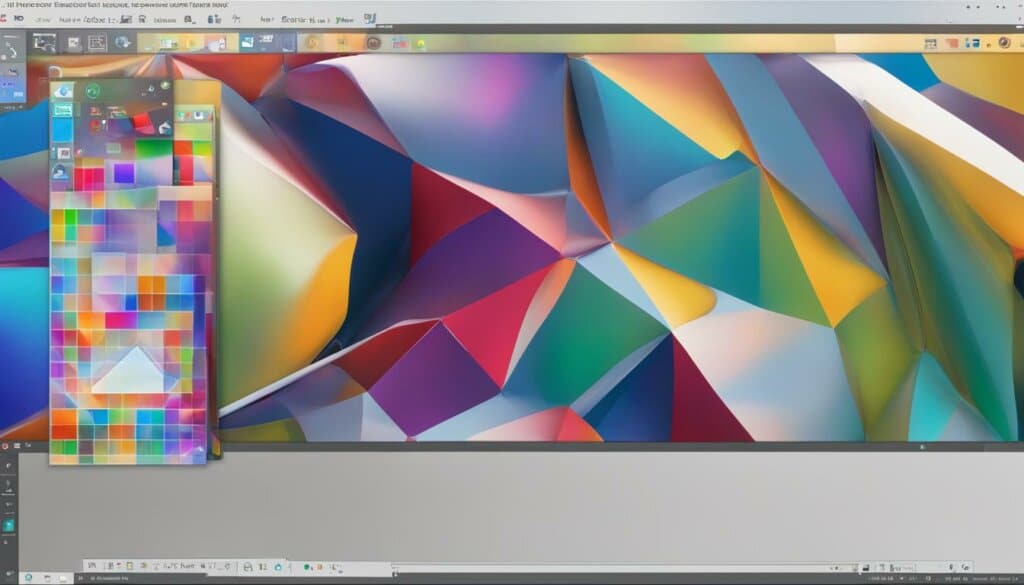
Regardless of its discontinued status, the Snipping Tool remains a popular choice among Windows users for its ease of use and versatility in capturing screenshots. Whether you’re using Windows 11 or an earlier version, the Snipping Tool provides a reliable solution for all your screenshot needs.
Using the Print Screen Key
When it comes to capturing the entire screen on your desktop, the Print Screen key, also known as PrtScn, is your go-to shortcut. By simply pressing the Print Screen key, you can copy a screenshot of your entire screen to the clipboard. This makes it easy to quickly capture and save what’s currently displayed on your monitor.
Once you have copied the screenshot to the clipboard, you can then open an image editing tool, such as Microsoft Paint, and paste the screenshot. From there, you can make any necessary edits or annotations before saving it as a file.
If your keyboard does not have a dedicated Print Screen key, don’t worry! There’s a workaround. You can use the Fn + Windows logo key + Space Bar shortcut to achieve the same result. This shortcut captures a screenshot of your entire screen and automatically saves it to the Pictures > Screenshots folder. Now you can easily access and review your screenshots whenever you need them.
Using Windows Key + Print Screen
When it comes to capturing your entire screen quickly and effortlessly, the Windows key + Print Screen keyboard shortcut is your go-to option. This nifty shortcut not only captures your screen but also automatically saves the screenshot to the designated Pictures > Screenshots folder on your desktop.
With just a simple combination of keys, you can conveniently take screenshots without any additional steps. It’s the perfect solution for those who need to capture their screen on the fly.
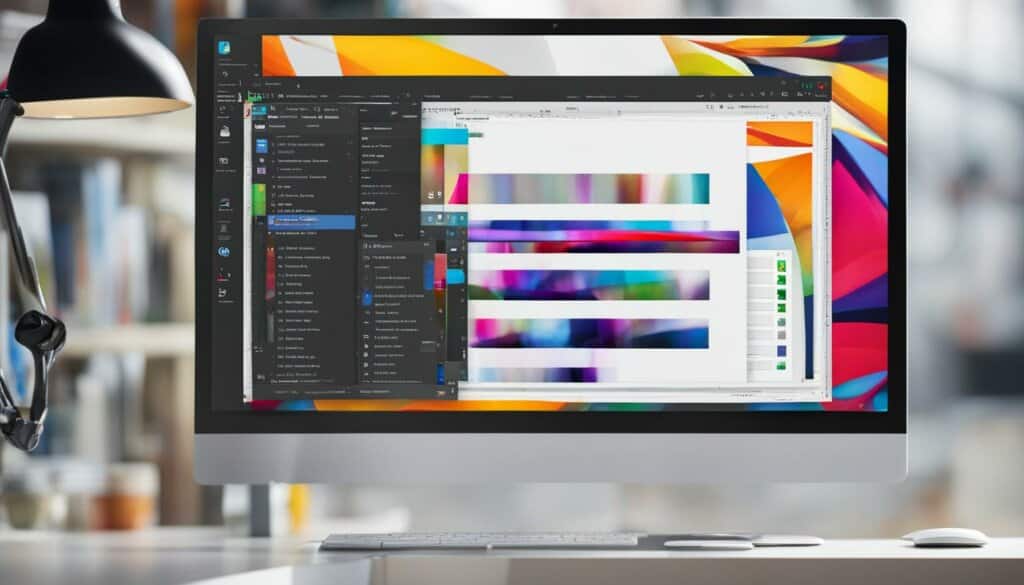
Whether you’re working on a project, troubleshooting an issue, or simply want to share something interesting, the Windows key + Print Screen shortcut ensures that capturing your screen is quick, efficient, and hassle-free. It’s a handy trick to have up your sleeve whenever you need to capture important information or share visual content with others.
Using Alt + Print Screen
When it comes to capturing a quick screenshot of the active window on your desktop, the Alt + Print Screen combination is your go-to solution. This convenient keyboard shortcut allows you to capture the contents of the active window with just a press of a few keys.
Once you’ve pressed Alt + Print Screen, the screenshot is automatically copied to your clipboard. From there, you can open an image editing tool, such as Microsoft Paint or Adobe Photoshop, and paste the screenshot. You can then save it as a file, making it easy to store and share your captured content.
To use this feature, simply follow these steps:
- Make sure the window you want to capture is active and in focus.
- Press and hold the Alt key on your keyboard.
- While holding the Alt key, press the Print Screen key.
| Shortcut | Description |
|---|---|
| Alt + Print Screen | Takes a screenshot of the active window and copies it to the clipboard. |
Using Alt + Print Screen is a quick and efficient way to capture specific windows or applications on your desktop. Whether you need to capture an error message, a specific portion of a webpage, or any other important information, this keyboard shortcut makes it a breeze to grab the content you need without any hassle.
Now that you know how to use Alt + Print Screen, you can easily capture and save screenshots of the active window on your desktop for future reference or sharing.
Using Game bar and Windows Logo + volume down buttons
The Game bar is a fantastic feature that allows you to capture screenshots while playing games or even during regular desktop activities. Whether you’re an avid gamer or a casual user, the Game bar provides a convenient way to capture and save what’s happening on your screen.
To access the Game bar, you can follow these simple steps:
- Enable the Game bar from the settings menu in Windows.
- Press the Windows key + G to bring up the Game bar overlay.
Once the Game bar is open, you’ll see various options to enhance your gaming experience, including the ability to take screenshots. Simply click on the screenshot button, and the Game bar will capture the active window or the entire screen, depending on your preference.
But what if you’re using a Microsoft Surface device and want to take a screenshot without accessing the Game bar? Well, Microsoft has you covered!
On a Microsoft Surface device, you can simply press the physical buttons – the Windows Logo key and the volume down button – simultaneously to capture a screenshot of the entire screen. It’s a quick and easy way to capture and save moments without disrupting your workflow.
This powerful combination of the Game bar and the Windows Logo + volume down buttons provides you with multiple options to capture screenshots effortlessly. Whether you’re a gamer or a regular desktop user, these methods offer convenience and versatility.
So go ahead, give it a try, and start capturing those epic gaming moments or important information on your screen with ease.
| Advantages | Disadvantages |
|---|---|
| Convenient access through the Game bar overlay | Requires Windows 10 or Windows 11 |
| Option to capture the entire screen or active window | Game bar may not be available in all games/applications |
| No need for additional software or tools | Physical button shortcut limited to Microsoft Surface devices |
With the Game bar and the Windows Logo + volume down buttons, you have powerful tools at your disposal to capture and save screenshots on your desktop. Whether you’re a gamer, a professional, or a casual user, these methods provide the flexibility and ease you need to accomplish your screenshot tasks efficiently.
Conclusion
Screenshots are a powerful tool for capturing and sharing information on your desktop. Whether you prefer using built-in tools like Snip & Sketch and the Snipping Tool, keyboard shortcuts like Print Screen and Windows key + Print Screen, or the Game bar and physical buttons on a Microsoft Surface device, capturing screenshots is a simple and convenient process.
With these methods, you can easily capture and save screenshots for various purposes. Whether you’re taking a screenshot for work, creating a tutorial, or simply capturing a memorable moment, the options available on your desktop make it easy to capture the exact content you need.
So, the next time you want to capture a screenshot on your desktop, remember the different methods and shortcuts available to you. By mastering these techniques, you’ll be able to effortlessly capture and share screenshots, allowing you to communicate and collaborate effectively with others.
FAQ
How do I capture my screen on desktop?
There are several methods you can use to capture your screen on desktop. You can use built-in tools like Snip & Sketch and the Snipping Tool, keyboard shortcuts like Print Screen and Windows key + Print Screen, or the Game bar and physical buttons on a Microsoft Surface device.
What is Snip & Sketch?
Snip & Sketch is a built-in screenshot tool available on Windows 10 and Windows 11. It allows you to capture screenshots of windows, rectangular areas, freeform shapes, and the entire screen. You can access Snip & Sketch by using the keyboard shortcut Windows key + Shift + S, searching for it in the Start menu, or finding it in the notification panel as “Screen snip.”
How do I use the Snipping Tool?
The Snipping Tool is another built-in screenshot tool available on Windows 11. Although it has been discontinued and delisted from the Start menu, you can still access it by searching for it. The Snipping Tool allows you to capture rectangular, freeform, full-screen, and window snips. However, it does not automatically save screenshots, and you need to manually save them before exiting the tool.
What is the Print Screen key?
The Print Screen key, also known as PrtScn, is a keyboard shortcut for capturing the entire screen. Pressing the Print Screen key copies the screenshot to the clipboard. You can then paste it into an image editing tool, such as Microsoft Paint, and save it as a file.
How do I use the Windows key + Print Screen shortcut?
Pressing the Windows key + Print Screen keys captures the entire screen and automatically saves the screenshot to the Pictures > Screenshots folder. This keyboard shortcut provides a quick way to capture your screen without the need for additional steps.
How do I use the Alt + Print Screen shortcut?
Pressing the Alt + Print Screen keys takes a quick screenshot of the active window. The screenshot is copied to the clipboard, and you can open an image editing tool to save it as a file.
How do I use the Game bar and Windows Logo + volume down buttons for screenshot capture?
Enabling the Game bar from the settings menu allows you to access it by pressing Windows key + G. Alternatively, if you’re using a Microsoft Surface device, you can use the physical buttons (Windows Logo + volume down) to take a screenshot of the entire screen.
Why should I capture screenshots on my desktop?
Capturing screenshots on your desktop is a powerful way to capture and share information. It allows you to save content for later reference, share specific details or instructions with others, or document important information for personal or professional use.

